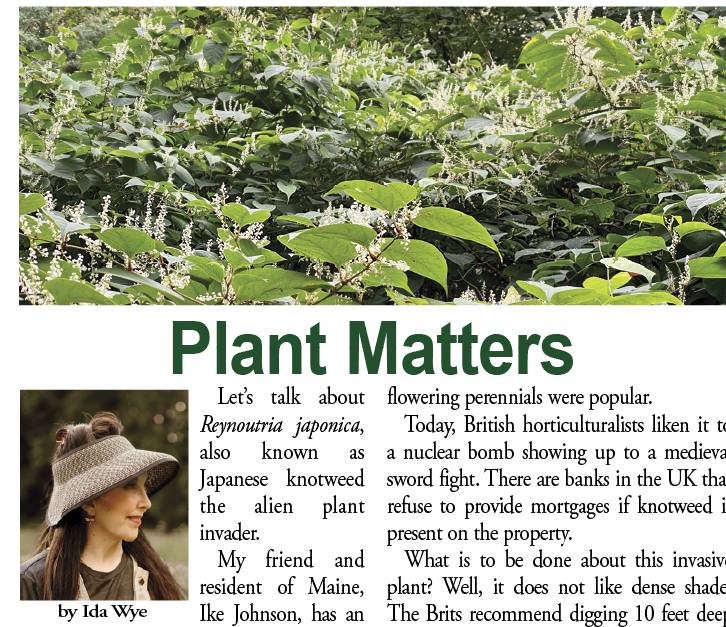Let’s talk about Reynoutria japonica, also known as Japanese knotweed the alien plant invader.
My friend and resident of Maine, Ike Johnson, has an eradication formula:
“Getting rid of it is not that difficult. First, cut it back every hour for two years. Second, apply a topical herbicide on anything that comes up in a quarter-mile radius. In year 3, dig up the roots with a backhoe. Fourth, at the end of summer, burn the dried roots. Fifth, take the ashes to New Hampshire and shoot them.”
This plant appears to be from another solar system, but it originates from the slopes of Japanese volcanoes and thrives in lava and toxic gases, especially after an eruption! It roots into fresh volcanic rock. Think about that!
Why on earth would anyone cultivate this as a prized ornamental? Consider…
In 1847 it won the ornamental plant gold metal. It was collected and sold by Philipp Franz Balthasar von Siebold and was sent (in 1850) as a gift to Royal Botanic Garden Kew, London by Siebold & Co, of Lieden, specializing in plants of the Far East. By 1884 it was cultivated throughout the UK and was 500 times more expensive than Wisteria. This menace was cultivated on purpose and was soon being sold wherever in the world flowering perennials were popular.
Today, British horticulturalists liken it to a nuclear bomb showing up to a medieval sword fight. There are banks in the UK that refuse to provide mortgages if knotweed is present on the property.
What is to be done about this invasive plant? Well, it does not like dense shade. The Brits recommend digging 10 feet deep and disposing as if radioactive or applying multiple small doses of herbicide over many years, sort of like a murderer in an Agatha Christie novel. They caution that surrounding the visible crown of the plant are dormant buds suppressed by the crown, lurking in wait. When you kill the crown, the buds come to life. There is a Japanese insect that has a “thing” for knotweed: a psyllid called Aphalara itadori and it could be introduced and used as a biological control.
So, there you have it.
This column is dedicated to my grandfather, Tom Wye, who planted Japanese knotweed in his garden and where I played as a child. ♦
Ida Wye is the principal of Ida Wye Designs, offering landscape design, consultation, implementation, and restoration. Ida was green long before it was fashionable. She is committed to creating gardens that heal our planet, one landscape at a time. Ida graduated from U. Mass. Amherst with a B. S. in Plant and Soil Sciences before working for the U.S. D. A. and teaching Horticulture. After studying Landscape Design at Radcliffe, she began working independently. She later studied Urban Forestry and Wetland Science. www.idawyelandscapes.com




